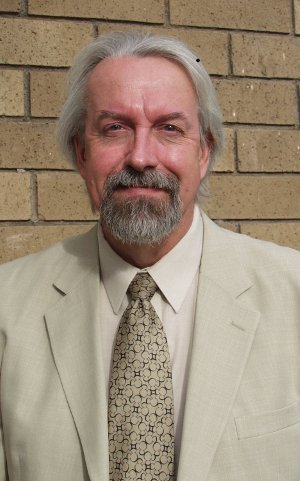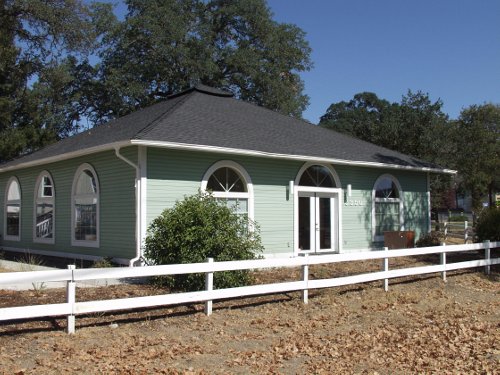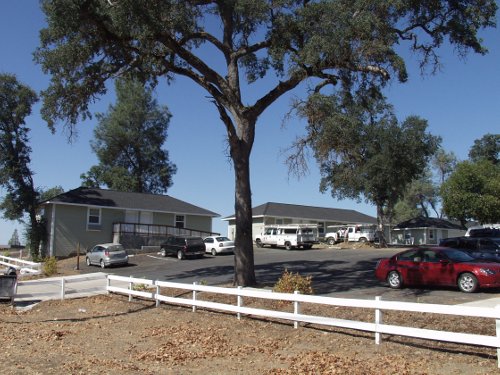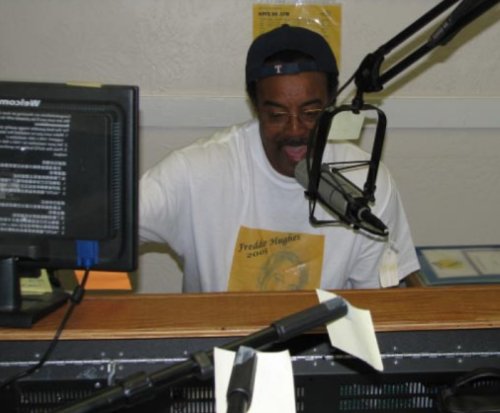
Lakeport attorney Doug Rhoades plans to run for district attorney in 2010. Photo by Elizabeth Larson.
LAKE COUNTY – Another hat is being tossed into the ring for the office of district attorney.
Lakeport attorney Doug Rhoades has announced his candidacy for district attorney in the 2010 election.
Rhoades, 56, will join another Lakeport attorney, Don Anderson, 57, in challenging incumbent Jon Hopkins, who has indicated he'll seek reelection next year. Hopkins, 63, was elected after running unopposed in 2006.
A Lake County resident since 1962, Rhoades has extensive experience both in law enforcement and in legal practice.
Rhoades worked for the Lake County Sheriff’s Office, serving as a correctional officer, deputy sheriff and sergeant, for more than 21 years.
After obtaining an administration of justice degree from Mendocino College, he attended Sonoma State University where he received a bachelor’s degree.
In 1996, Empire School of Law in Santa Rosa awarded a juris doctor degree. He began his law practice the following year.
Rhoades is active in the local community and many civic organizations.
He is past president of the Lake County Arts Council, the Lake County Deputy Sheriff’s Association and served on the Kelseyville Unified School District’s Board of Trustees.
“Many good things have happened in Lake County since I was a young boy here,” Rhoades said. “But I have seen what occurs when poor decisions are made. Prosecutorial decisions need to benefit our entire community, but many recent actions have been detrimental to Lake County’s reputation.
“That’s one reason I am seeking the office of District Attorney,” Rhoades said. “The other is a desire to continue to serve the public. I am fortunate to have received the support of many friends in the community who have asked me to run.”
Anderson welcomed Rhoades to the race. “I know Doug well,” he said.
“The more competition, the better,” and the more issues that will come out, Anderson added.
Hopkins responded to Rhoades' announcement and his criticism of the District Attorney's Office with strong statements of his own.
“This is not a political job, it is a professional job,” Hopkins said.
He said the district attorney is the last person who should make decisions based upon which way the political wind is blowing. “We make thousands of decisions a year, and they have to be based upon a professional opinion of what should be done to protect the public and accomplish justice.”
There are several key issues to the effective and fair administration of justice, according to Rhoades.
“The right to a jury trial is guaranteed to all criminal defendants. But that can mean no other settlement was possible. When the prosecuting agency refuses to discuss resolution of a case, the defendant is left with little choice but to put it before a jury,” Rhoades said.
“As district attorney, I would seek to resolve appropriate cases through serious negotiation of the charges and consequences,” he added.
Hopkins responded that his office never refuses to discuss resolution in a case, but it won't sentence bargain with accused felons, which is a longheld stance.
“We have seen a succession of defense lawyers advocate a run for district attorney on this platform that urges a policy of greater leniency on felony cases, and the people of Lake County consistently say no,” Hopkins said.
Rhoades said the District Attorney's Office's current administration wastes resources that should be devoted to the most serious crimes, such as drug trafficking and production, crimes against the elderly and all crimes of violence, domestic or otherwise.
“In our current economy, resources will be even more scarce,” Rhoades said. “We must focus on violent crimes and those that cause significant economic loss, rather than devote those resources to incidents that do not put the public at risk.”
Hopkins said Rhoades' claim of wasted resources is not true. He said he has two senior deputy district attorneys who devote most of their time to prosecuting drug trafficking and prosecution, as well as a team comprised of a prosecutor, investigator and victim advocate assigned to elder abuse cases, both financial and physical abuse.
In addition to receiving new grants for pursuing domestic violence and driving under the influence prosecutions, Hopkins also has a team dedicated to child molestation and abuse cases, which he said are priorities for his office. That led to the creation of the multidiscipline interview center (MDIC), completed last year, to serve child victims in a more secure, comforting environment.
Rhoades, who also handles court-appointed cases for indigent defendants, emphasized the inconvenience and cost to the public that a failure to resolve cases produces.
“Many people respond to a jury summons only to find a case has settled on the day of trial or been continued,” he said. “That wastes time for each juror, not to mention lost wages and travel costs. Those reporting for jury service should expect their time to be respected and reserved for serious cases that cannot be resolved in any other manner.”
Hopkins said there are many reasons for continuances and delays – some of which result from the actions of defense attorneys – and it wouldn't be helped by adopting a policy of sentence bargaining with felons.
“An investment of a juror's time in sitting on a criminal case is always a sacrifice, but it is a sacrifice that makes our system the best in the world, and it makes our communities safe,” he said.
Rhoades, Anderson and Hopkins will begin the bulk of the paperwork for the election process early next year, when petitions for signatures in lieu of filing fees will start in January, to be followed the next month by declaration of candidacy and nomination papers.
The primary will be held June 8. If no candidate wins a 50 percent plus one majority, the two top vote getters will take part in a runoff election in November 2010.
E-mail Elizabeth Larson at This email address is being protected from spambots. You need JavaScript enabled to view it. . Follow Lake County News on Twitter at http://twitter.com/LakeCoNews .













